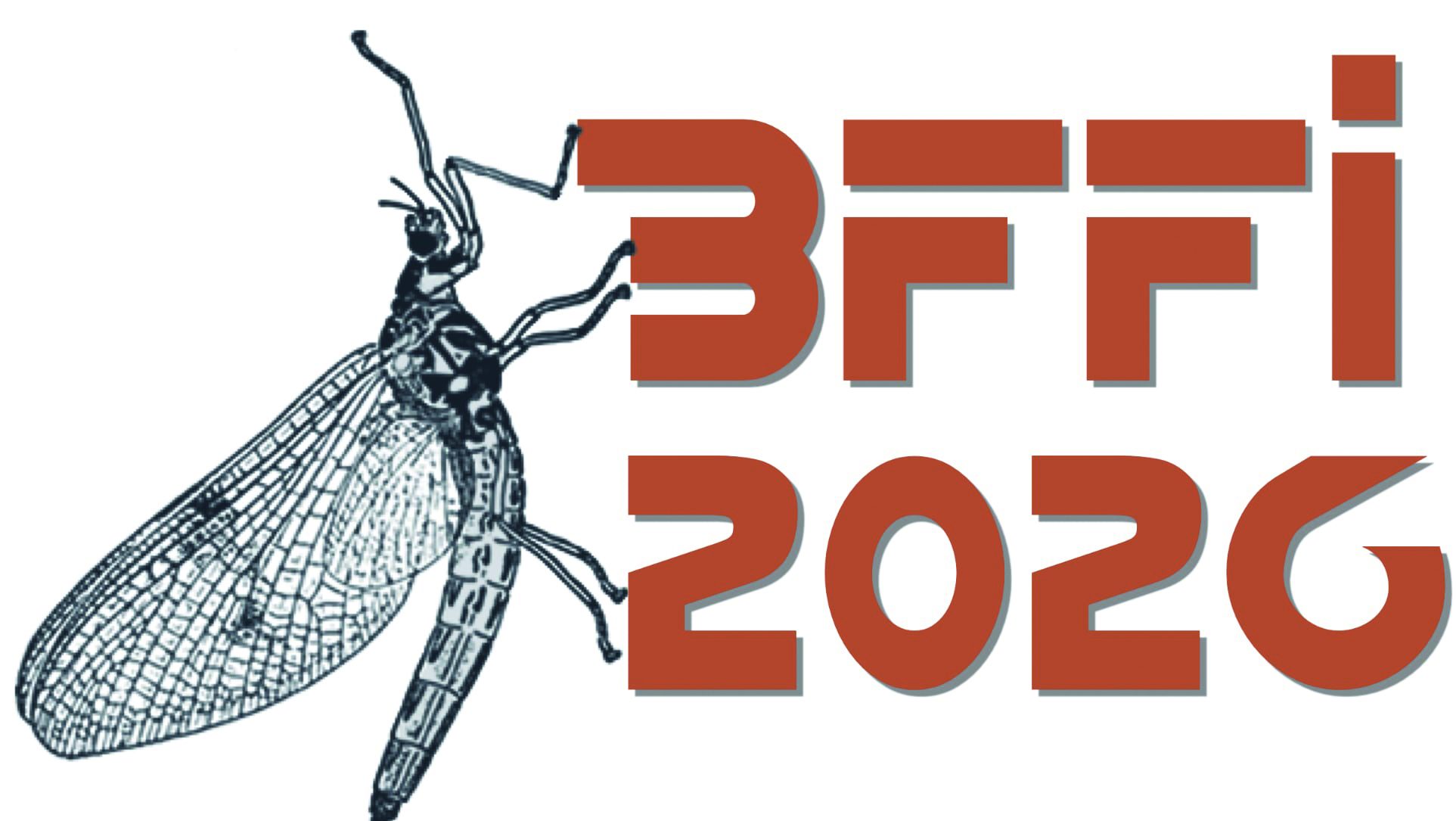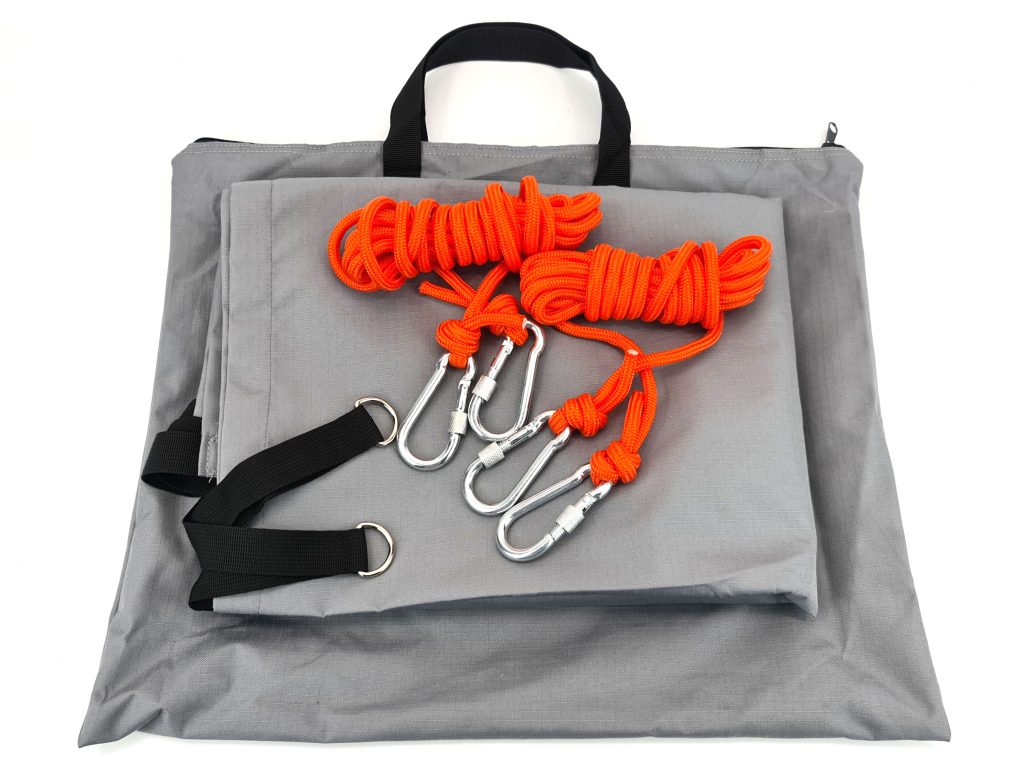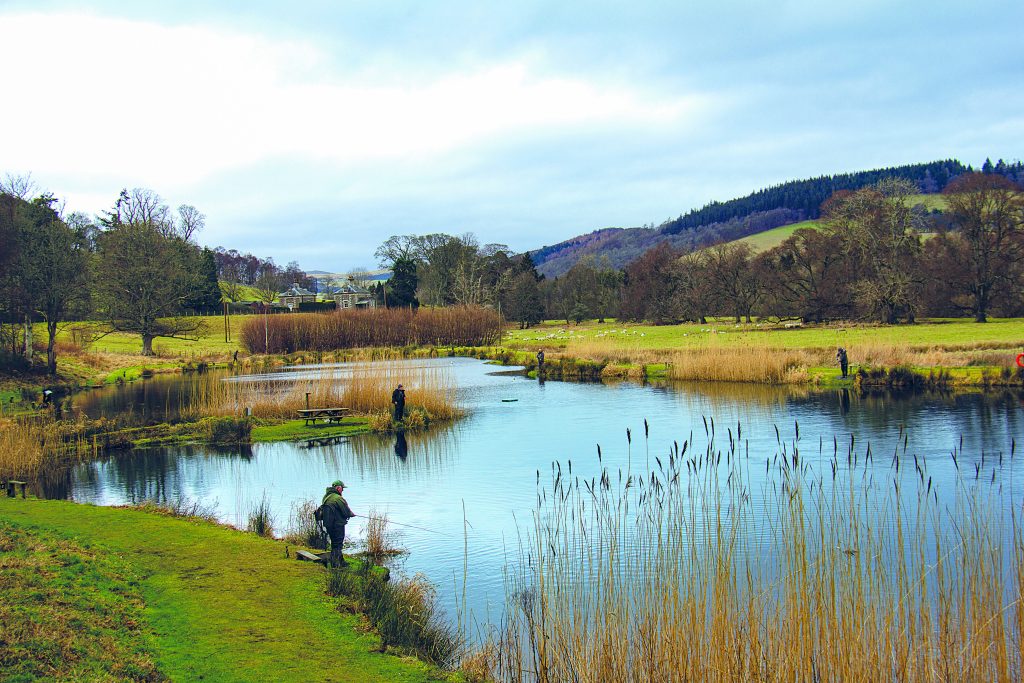Fly fishing stillwaters with weedbeds: summer tactics for shallow-water trout
Learn advanced techniques for fly fishing stillwaters with weedbeds — targeting big summer trout using stealth and smart presentation.
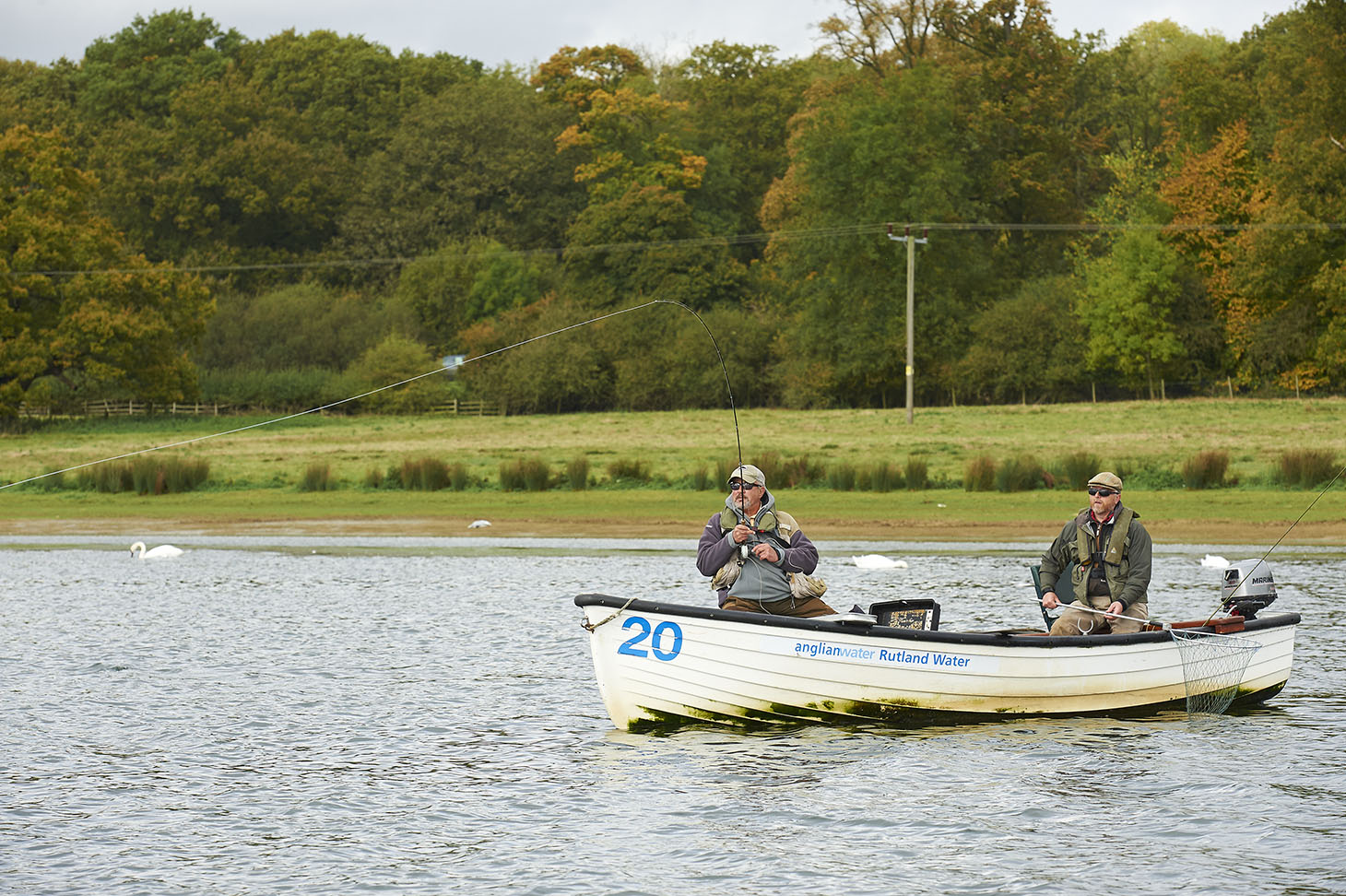
A summer of hot weather can lead to rapid weed growth in the shallow areas of reservoirs. Water that was 8ft–12ft deep in early season can shrink to 3ft–4ft deep. Many anglers avoid these areas, based on the premise that if they can’t see fish, then there are none there. But you should never discount shallow weedy areas — they can provide exciting sport. For success, you’ll need to master the art of fly-fishing stillwaters with weedbeds — a challenge that rewards stealth and precision.
Why do weedbeds matter in stillwaters?
Established weedbeds are a haven for corixa, shrimps, and fry. They also offer shade and cover for fish — especially grown-on resident trout, which do not “switch off” like newly stocked fish.
These trout are more accustomed to high and fluctuating water temperatures in the reservoir and will feed naturally around the weedbeds. If you’re fly fishing stillwaters with weedbeds, this is your cue to slow down, observe, and fish with intent.
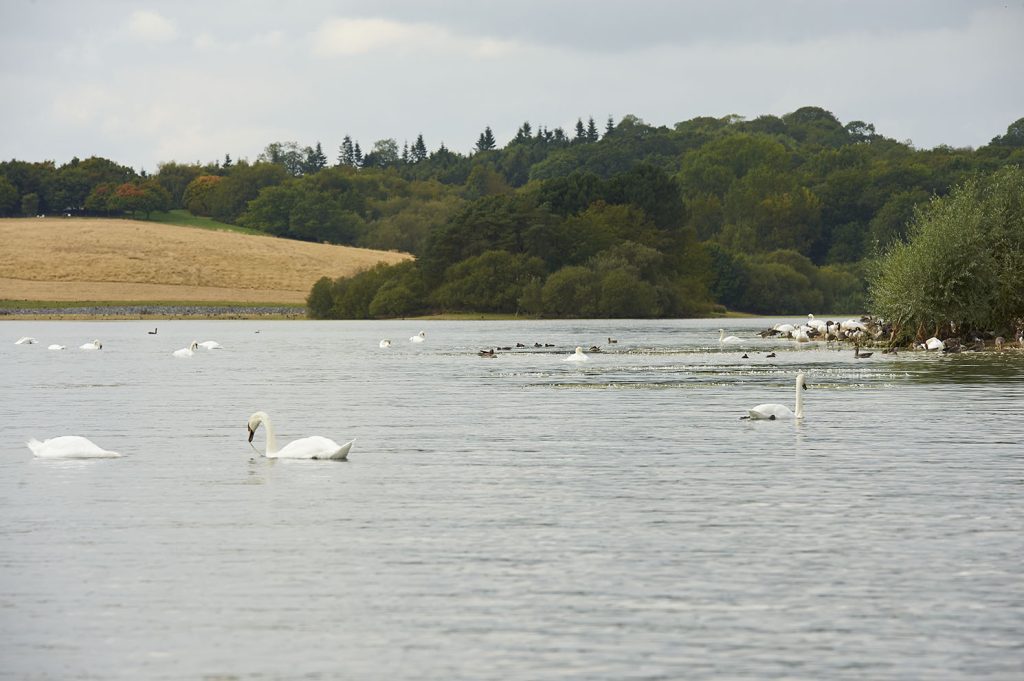
Overcoming the clear-water challenge
Areas of weed are not affected by high winds and don’t colour up quickly. This clear water is a challenge for the angler to overcome.
Numerous casts with weighted flies will result in spooked fish — and it’s impossible to catch a frightened trout. When fly fishing stillwaters with weedbeds, patience, precision, and stealth are your most valuable tools.
How to read channels in stillwaters with weedbeds
At first glance, you may think weedbeds are a thick carpet of impenetrable vegetation, but they often hold unique features — deep holes and channels.
These channels act like wind lanes — trout use them to patrol, feed, and navigate. One larger main channel is often intersected by smaller side channels. Fish usually enter the system via the main channel — this is where your fly should be.
If you’re serious about fly fishing stillwaters with weedbeds, learning to recognise and target these micro-structures is crucial.
Anticipate the fish, not just the cast
Trout often patrol in pairs, sometimes following a repeated route. In the shallows of Rutland Water’s North Arm, I’ve seen large browns of 7lb–8lb using the same path repeatedly.
Rather than casting directly at fish when you see them (and risking spooking them), make your cast a minute or so before you expect their next pass. Lay your fly-line on the weed with just your leader and fly in the trout’s path — a stealthy move that defines success when fly fishing stillwaters with weedbeds.
When the fish is a foot from the fly, make a short, sharp 4in–6in pull. You’ll often see the fish turn, take, and move off — with no visible take on the line.
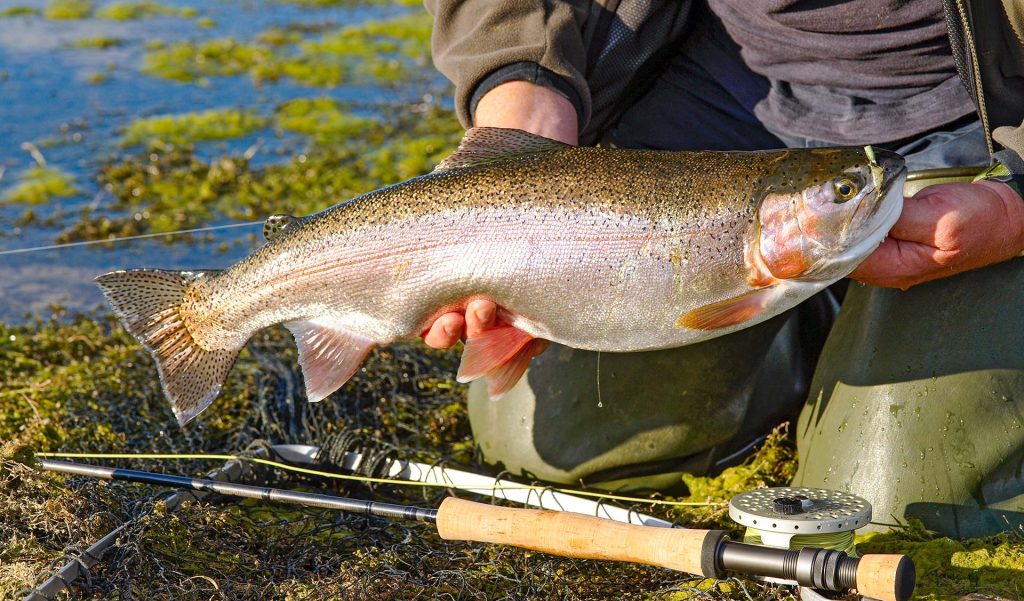
Three proven methods for effective fly fishing in weedbeds
1. The washing line
Use a 13ft leader of 8lb degreased copolymer. On the point, a Mylar Floating Fry; on the dropper, a Red Holographic Diawl Bach, 3½ft above.
In calm conditions, switch to a Popper Minkie on the point. The “pop” created by a sharp strip can provoke aggressive takes.
2. The single booby
Try a size 8 Minkie Booby with 6mm–7mm eyes, on a floating line with a 13ft fluorocarbon leader. Use short sharp pulls to attract, followed by a medium-paced figure-of-eight retrieve.
It’s a perfect fry imitation — ideal for ultra-shallow water and deadly when fly fishing stillwaters with weedbeds.
3. Dry-fly set-up
A 14ft leader of 8lb degreased copolymer. CDC Hare’s Ear on point; an orange or red/claret Hopper on a 6ft dropper.
“Park” your flies over a hole or channel and wait for the fish. Expect fast, powerful runs and accept that you’ll lose some. But the takes — and the fish — are unforgettable.
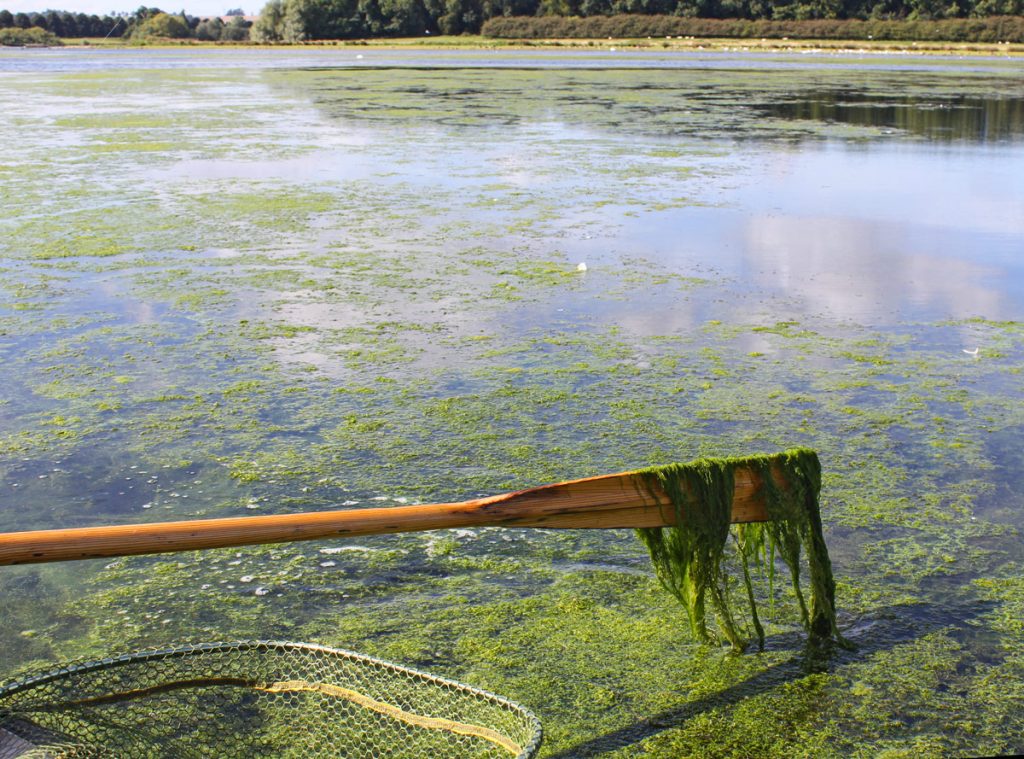
How to maximise success when fly fishing in weedbeds
When fishing from a boat, gently motor to the edge of the weedbed and cut the engine 20ft away. Let momentum push you in, then fine-tune with the oars. Often, there’s no need to anchor — the weed will hold you.
You’ve effectively set up an ambush. Fish into the channel or drop-off while remaining hidden. This quiet approach is often more productive than drifting or anchoring repeatedly.
After landing a fish, the area may be disturbed. Either wait 30–45 minutes for the water to settle or move on. If you’re fly fishing stillwaters with weedbeds, mobility, timing, and minimal disturbance are your keys to success.
Final thoughts
Fly fishing stillwaters with weedbeds offers some of the most rewarding and technical trout fishing you’ll encounter. From reading subtle water features to perfecting stealthy presentations, every detail counts. Accept the challenge — and enjoy the reward.

